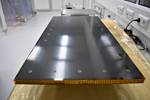Huntsman, AMD collaborate for functional composites development
Electrically enhanced, carbon nanotube-integrated composite materials will be supported by Advanced Material Development’s (AMD) nanomaterials expertise and Huntman’s chemical and material solutions.
Global material solutions provider Huntsman Corp. (The Woodlands, Texas, U.S.) has announced it will collaborate with nanomaterials business Advanced Material Development Ltd. (AMD) to develop carbon nanotube (CNT)-integrated functional composite materials in the U.S.
Specifically, the collaboration will involve the development of electrically enhanced materials by integrating AMD’s all-carbon technology into Huntsman’s resin systems to provide high-performance composites for the defense and aerospace industry.
Huntsman’s senior technical leadership will be working with AMD’s teams affiliated with Rice University in Houston, Texas, and the University of Sussex in the U.K., to develop product solutions that are cost-effective and reliable.
“This relationship brings together some of the best learnings in advanced carbon fiber technology,” says John Fraser, commercial director of Miralon for Huntsman Corp. “AMD’s work in next-generation carbon fiber materials, plus the expertise through Rice University’s Carbon Hub, along with Huntsman’s knowledge and capabilities with composites and CNT materials, create an opportunity for collaboration and progress.”
This progress will be aided by the timely sabbatical of Professor Alan Dalton, who is chief scientific advisor at AMD and chair of material physics at Sussex University. Dalton’s sabbatical will be spent at Rice University, allowing close proximity to Huntsman’s operations.
“Being based in Texas allows me to work more closely with both Huntsman and AMD, facilitating faster and more effective progress,” says Dalton. “This proximity is key in accelerating the development of these composites for applications ranging from wind turbines to aerospace structures and enables us to leverage the combined expertise of the teams at Rice and Sussex.”
Related Content
-
Manufacturing the MFFD thermoplastic composite fuselage
Demonstrator’s upper, lower shells and assembly prove materials and new processes for lighter, cheaper and more sustainable high-rate future aircraft.
-
Combining multifunctional thermoplastic composites, additive manufacturing for next-gen airframe structures
The DOMMINIO project combines AFP with 3D printed gyroid cores, embedded SHM sensors and smart materials for induction-driven disassembly of parts at end of life.
-
The lessons behind OceanGate
Carbon fiber composites faced much criticism in the wake of the OceanGate submersible accident. CW’s publisher Jeff Sloan explains that it’s not that simple.

















